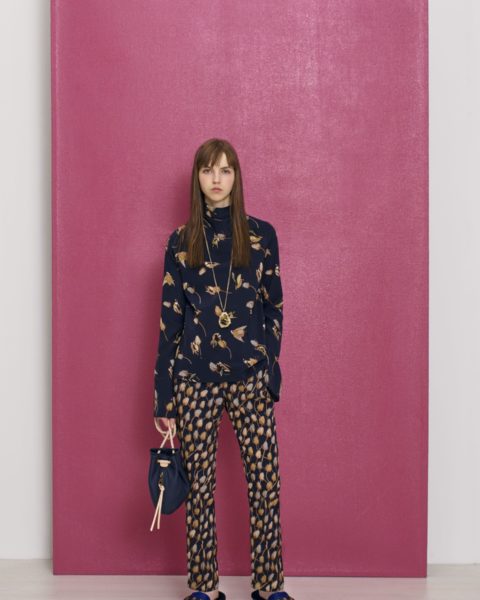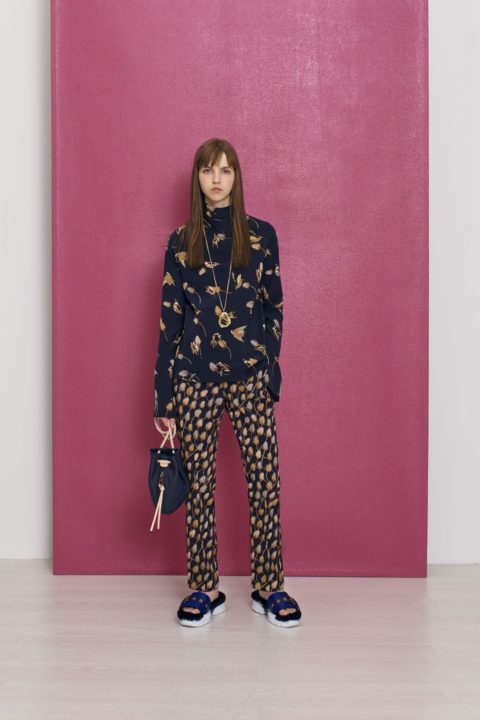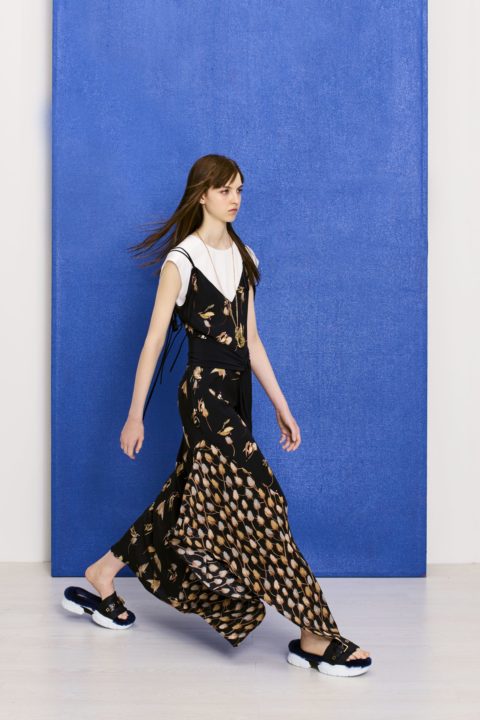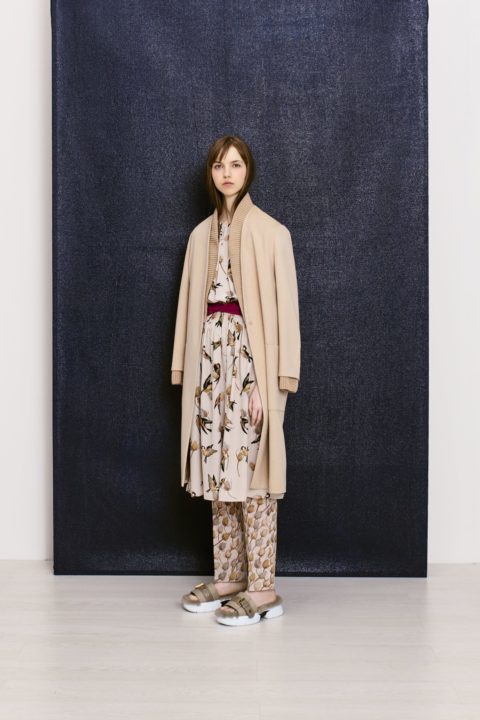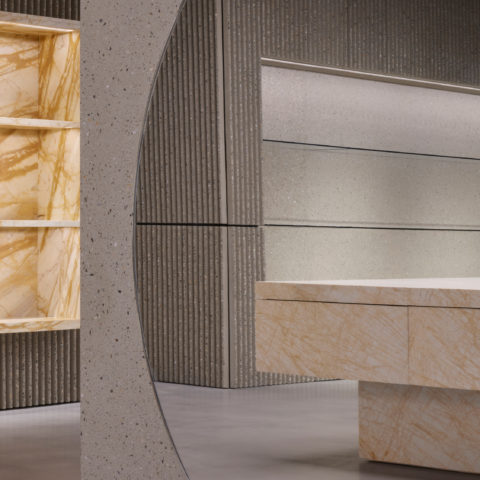Ever Wonder How Some Designers Come Up With the Prints They Use?
Well, let Agnona’s Creative Director Simon Holloway tell you.
When Agnona was founded in the Italian Alps in 1953, it began as a fabric mill that supplied textiles to some of the best couture houses of its day—Christian Dior, Balmain, Givenchy and Pierre Cardin to name a few. When couture gave way to ready-to-wear in the 60s, the owners established a womenswear line that would draw inspiration from the mill’s beautiful textiles. We met with Agnona’s creative director Simon Holloway at his showroom in Milan earlier this year to talk about Agnona’s cocoon coats in alpaca and wool, maxi-knit dresses cinched at the waist and his vision for the brand. While perusing Resort 2018, we stumbled upon a “Goldfinch and Teasel” print and Holloway explained how it came to be.
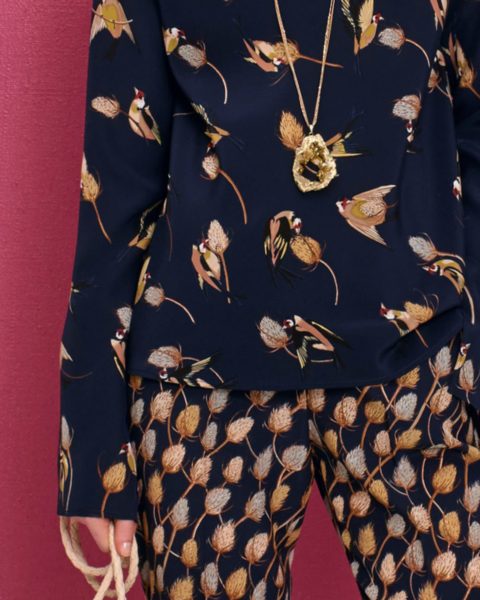
What’s a teasel?
In English it’s called ‘teasel’. In Italian it’s called carde. They’re like a soft thistle. They were dried and the spikes on the thistle were put into drums and used to card the cashmere fiber. When I was researching this, I was thinking, ‘What would be an interesting element to play with in print?’ The idea of the carde or teasels came to me. It’s an obvious extension of our textile history. Then I learned people plant teasels to attract goldfinch [birds]. That’s where the goldfinch comes from. If you google ‘teasel’ and ‘goldfinch,’ you’ll come up with these beautiful pictures of goldfinch flocking around the teasel. It’s a sweet story. The process of carding is when the fibers are pulled apart from each other to separate them.
When you say the fibers…
… the raw fiber. They shear it from a camel or a cashmere goat and then it’s bundled. That’s already been purified. If you can imagine, these animals are out in the wild. They’re grazing. You need to get rid of all the impurities. That’s the carding process.
The teasel brushes the fabric?
What they do is put hundreds of them in drums. The drums rotate with the fibers underneath.
Why this collection?
For cruise, at first we were playing with things that were more nautical because it was a cruise collection. We had a navy and ivory story that was going on. It was too obvious for me. I was like, ‘Let’s take a step back. What could it be?’ Prints often have flowers or birds. I was thinking, ‘What would be the Agnona botanical element?’ I thought about the fabrics and the carding process and the teasels. I didn’t know what it was called. I only knew the Italian word so I started researching it. The next day I was looking for another picture and there was a picture of the bird. I googled “teasel and bird” and the goldfinch popped up. People plant teasels to attract goldfinch. I thought, ‘Oh my god. This is amazing!’ The goldfinch is such a beautiful bird. To have that as an element, that’s it. That’s all we need.
(Agnona is available exclusively at Holt Renfrew.)

